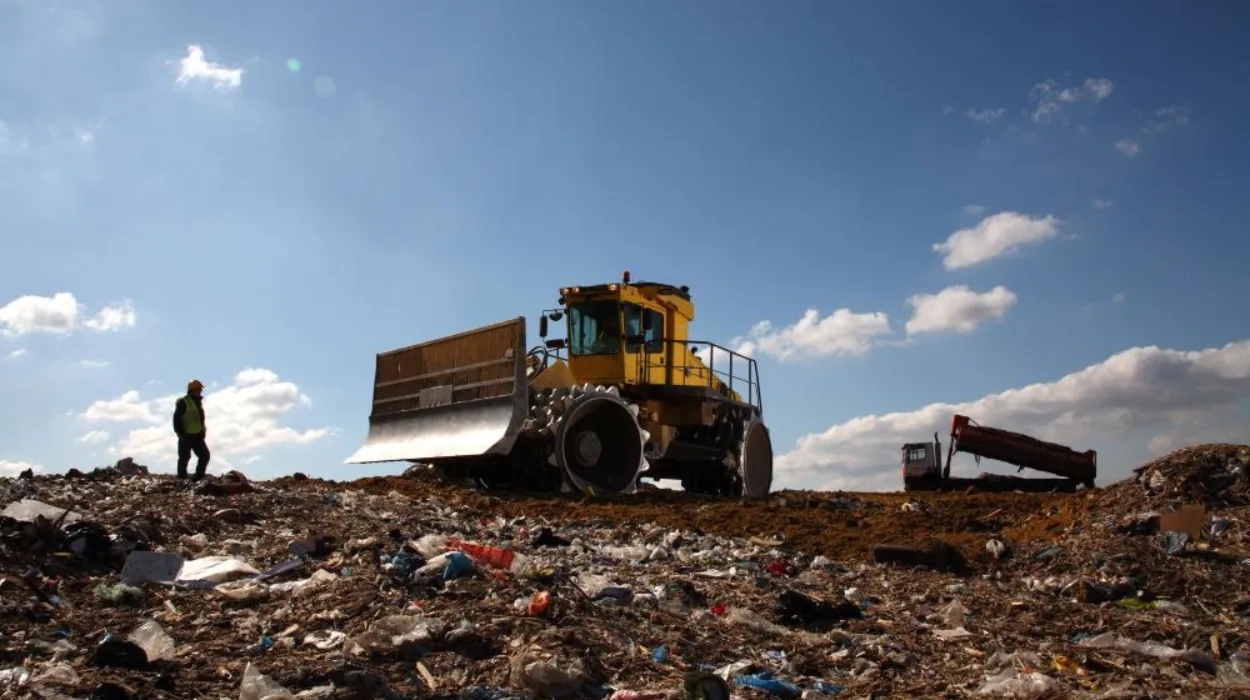UK (Parliament Politics Magazine) – Over 100 former landfills in England could be leaking toxic waste due to poor historical records, posing risks near homes, parks, and waterways.
As reported by The Guardian, more than 100 ageing waste sites across England, possibly polluted with hazardous material, have experienced flooding since 2000, raising major safety threats.
What did investigators find about hazardous landfills near homes?
An analysis by Unearthed, in collaboration with The Guardian, revealed that multiple former landfill sites, which may contain dangerous substances, are located near parks and housing complexes, affecting hundreds of households.
The investigation found that while councils are required to monitor the risks posed by these sites, the lack of funding has left many local authorities unaware of their responsibility.
Data gathered from 20,000 landfill sites across England helped the investigation identify the highest-risk sites, including those used for disposing of “special” or industrial waste between 1945 and the mid-1990s, before regulations on record-keeping.
Using flooding data from the Environment Agency, and with assistance from Dr. Paul Brindley, a mapping specialist at the University of Sheffield, the investigation identified landfills where over 50% of the surface area had been submerged.
Dumps containing only household waste, those deemed safe, or those with existing controls were excluded from the analysis, focusing solely on locations that could potentially house dangerous substances, such as pharmaceuticals, “forever chemicals,” heavy metals, and “liquid sludge,” ranging from sewage to toxic waste like cyanide.
The investigation identified 105 sites, most located in lower-income regions, especially in the north of England.
The analysis showed that 2,600 former waste disposal sites, potentially containing hazardous materials, are located within 50 metres of watercourses.
What did David Megson say about the safety of former landfill sites?
According to David Megson, an environmental chemist at Manchester Metropolitan University, the majority of old landfill sites are probably safe, containing non-reactive waste, but a few hold dangerous substances.
He added,
“Historic reporting of what went into these sites wasn’t great, so in many cases, you’ve got little idea what is in there until you dig into it.”
What did Prof Kate Spencer say about the long-term impact of historic landfills?
Prof Kate Spencer, a landfill expert from Queen Mary University of London, pointed out that humans have failed to account for the consequences over hundreds of years of waste disposal.
She added,
“We now know far more about the potentially harmful effects of the waste materials and pollutants we’ve dumped, particularly chemicals like Pfas and PCBs, and how the impacts of climate change, such as flooding, could reopen pathways for those pollutants to enter the environment.”
What did Charles Watson say about the failures in regulating pollutants?
Charles Watson, the chair and founder of the campaign group River Action stated,
“Everywhere you look, polluters can find easily accessible loopholes in the enforcement regime to break the law and degrade the environment. However, the failure to provide adequate funding to regulate something as basic as landfill sites that could be leaching highly hazardous waste is all the more shocking.”
He added,
“If our regulators can’t sort out how to protect us from pollutants that in theory have already been ‘safely’ disposed of, then we have little hope of ever seeing a holistic approach to combating the wider sources of water pollution.”
What did Natalie Bennett say about the need for better landfill regulations?
Green peer Natalie Bennett, whose party advocates for legislation mandating better record-keeping of waste sites to mitigate public risks, stated,
“The lack of adequate regulations on contaminated land poses a threat to human life and welfare, especially given climate breakdown, rising sea levels, increased rainfall and flooding.”
She added,
“Greens urge Labour to add this law to the statute books and provide the necessary funds for local authorities to meet the requirements of such a new law.”
What did the Environment Agency say about its role in managing former landfills?
The Environment Agency confirmed its support for local authorities responsible for former landfills. It said,
“In circumstances where the Environment Agency leads on remediation, we work tirelessly with partners to reduce unacceptable risks to human health and the environment.”
Dr Grant Richardson’s views on funding cuts for land remediation
Before 2017, local councils received grants from the Department for Environment, Food and Rural Affairs to tackle contaminated land.
Dr Grant Richardson, an environmental consultant and expert on landfill and contaminated land, pointed out that there has been an “erosion of funding” since then.
He stated,
“If there’s no obvious risk of harm or pollution emanating from these sites, nothing will be done to investigate or remediate them unless sites come to be developed. That means there are likely hundreds or potentially thousands of sites that have not been properly investigated that could be leaching contaminants at harmful levels into the environment.”


